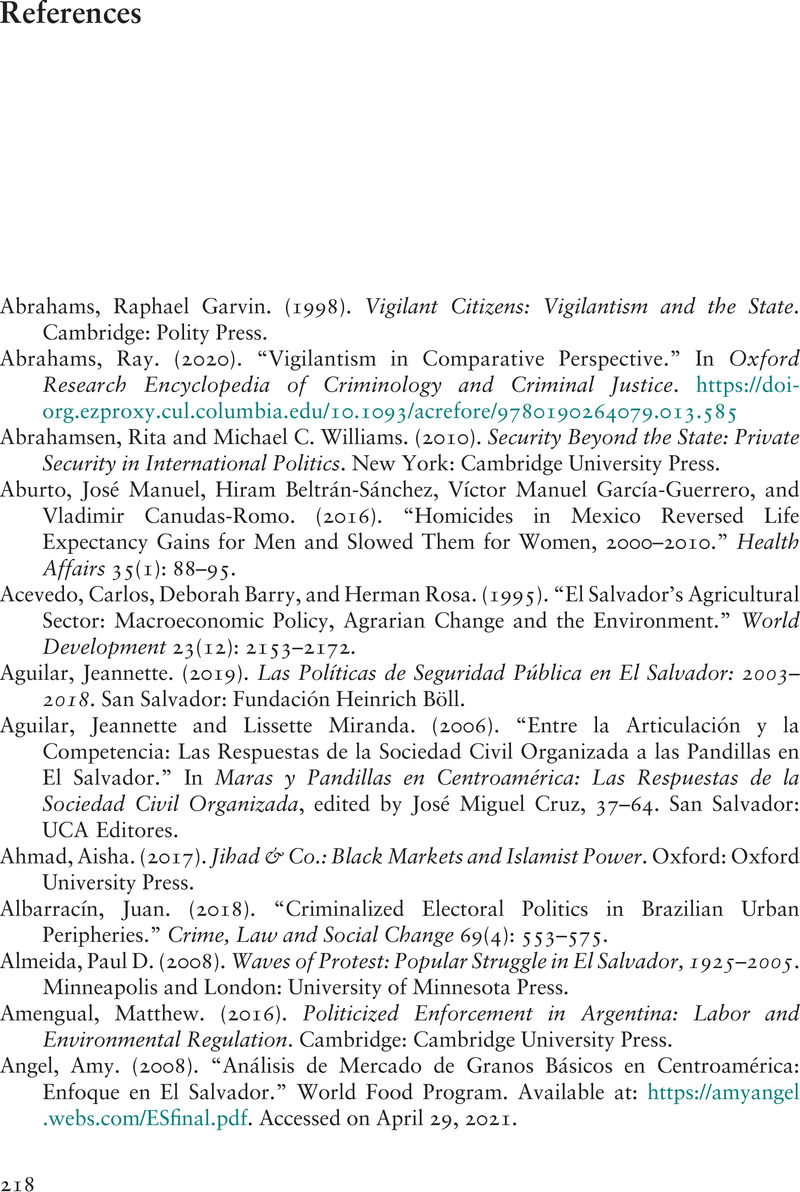Book contents
- Resisting Extortion
- Cambridge Studies in Comparative Politics
- Resisting Extortion
- Copyright page
- Dedication
- Contents
- Figures, Tables, and Maps
- Acknowledgments
- Abbreviations
- Part I Resistance to Criminal Extortion
- Part II Everyday Resistance and Piecemeal Vigilantism
- Part III Collective Vigilantism and the Coproduction of Order
- Appendix Researching Resistance to Criminal Extortion
- References
- Index
- Series page
- References
References
Published online by Cambridge University Press: 23 December 2021
- Resisting Extortion
- Cambridge Studies in Comparative Politics
- Resisting Extortion
- Copyright page
- Dedication
- Contents
- Figures, Tables, and Maps
- Acknowledgments
- Abbreviations
- Part I Resistance to Criminal Extortion
- Part II Everyday Resistance and Piecemeal Vigilantism
- Part III Collective Vigilantism and the Coproduction of Order
- Appendix Researching Resistance to Criminal Extortion
- References
- Index
- Series page
- References
Summary

- Type
- Chapter
- Information
- Resisting ExtortionVictims, Criminals, and States in Latin America, pp. 218 - 240Publisher: Cambridge University PressPrint publication year: 2022



